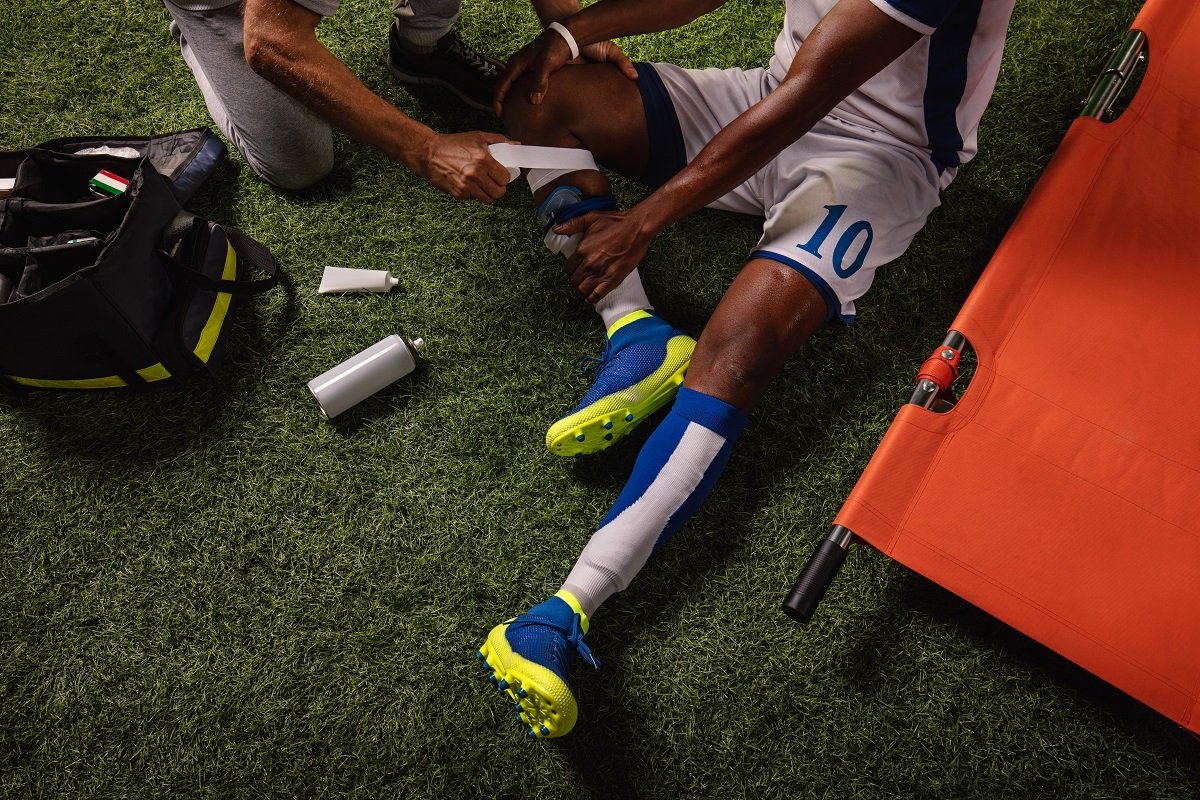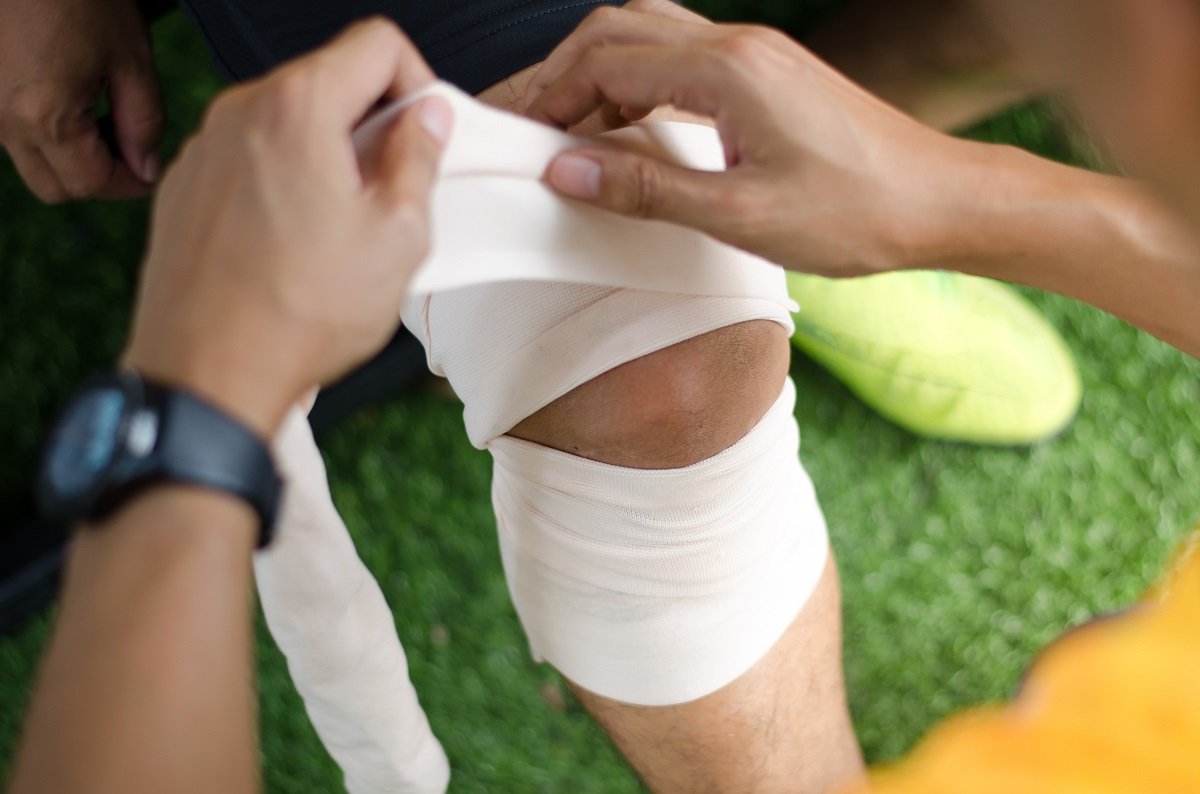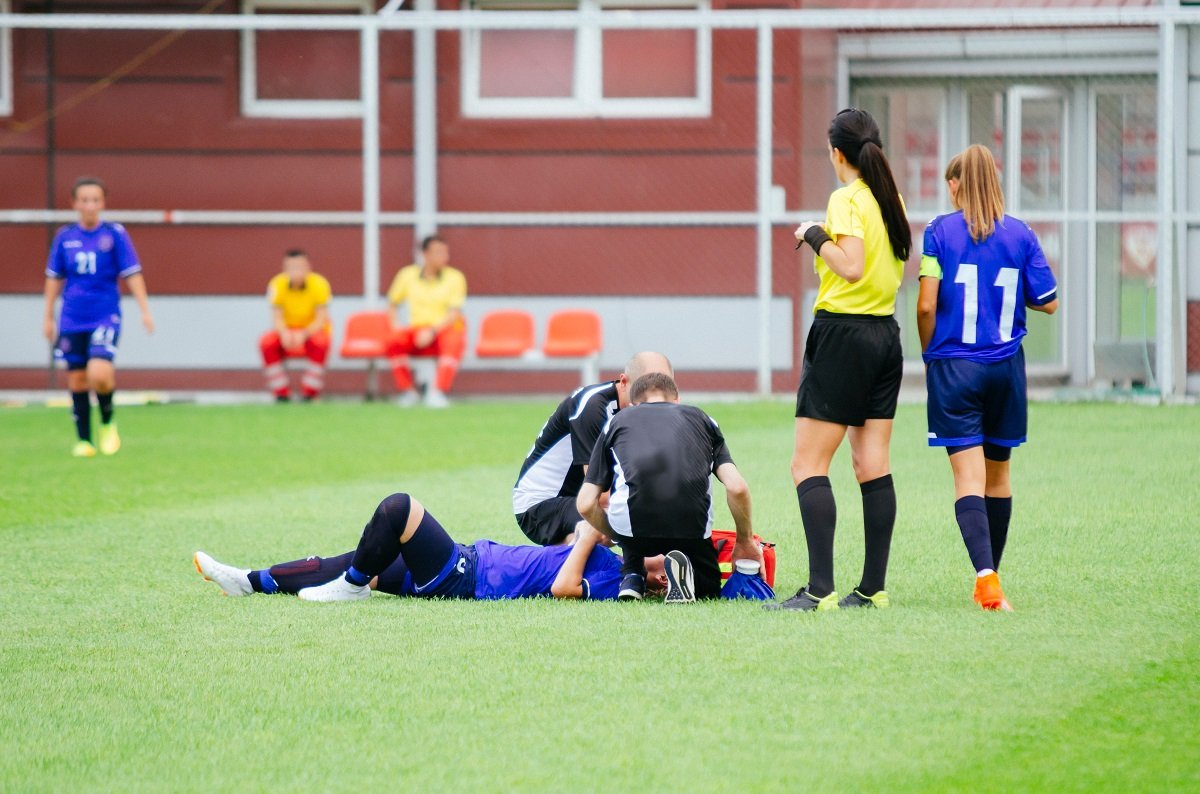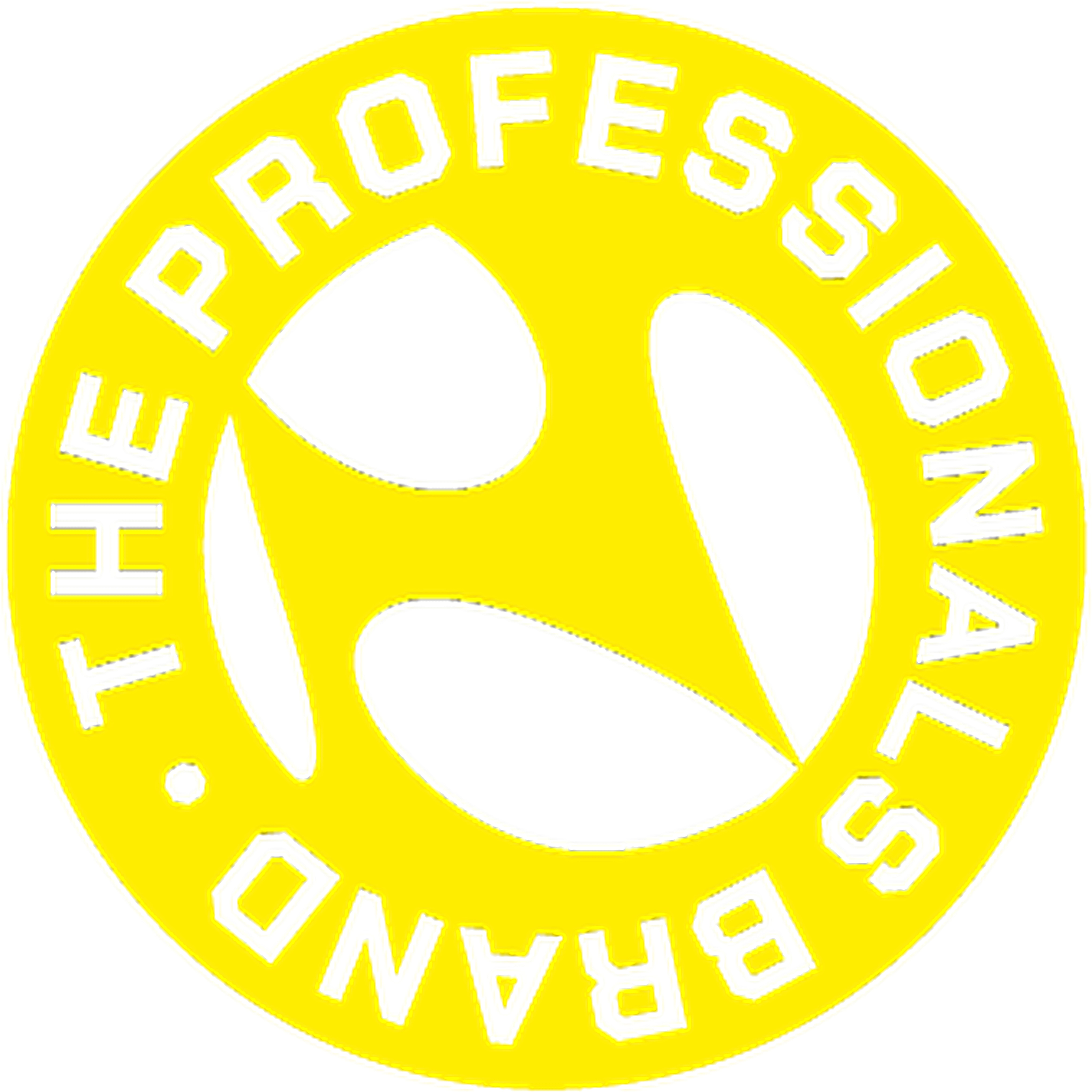
In the fast-paced and physical game of football, injuries are inevitable. Having a well-stocked first-aid kit is essential for any football club to ensure the safety and well-being of its players. Whether you're a coach, a player, a physio, or a team manager, knowing what items to include in your first-aid kit can make a big difference in handling injuries effectively. In this guide, we cover what a football first-aid kit should look like and identify the most important items to include.
Wound care supplies
There are a wide range of injuries that can occur during a game of football, including cuts and wounds. A player might pick up a scrape during a tackle or a cut from a high boot. Make sure you are prepared by having the necessary items in your football team's first-aid kit.
Items to include
- Adhesive bandages: Include a range of sizes to cover minor cuts and abrasions.
- Sterile gauze pads: Gauze pads can be very effective for covering larger wounds and controlling any bleeding.
- Medical tape: Have medical tape on hand so you can secure bandages and gauze pads in place.
- Antiseptic wipes: If a player has a cut or abrasion, it’s important to clean and disinfect the wound before dressing.
READ ALSO: Football workouts to improve your fitness and your game
Bandages and wraps

A first-aid kit for a football team should certainly include a healthy collection of bandages and wraps to support injuries like sprains and twists. Muscular and joint injuries are very common in football; it can be easy to twist an ankle or injure a knee, so stock up on a variety of different supports.
Items to include
- Elastic bandages: Include some elastic bandages to quickly provide support for sprains and strains.
- Ankle supports and braces: An adjustable ankle support or brace can be a very handy item to have available should a player require it.
- Triangular bandages: To create slings, if a player falls on their arm, make sure your bag includes triangular bandages.
- Compression wraps: To reduce swelling for joint injuries, a compression wrap can be invaluable, helping to treat the injury quickly.
READ ALSO: What are the best penalty kick training drills?
Ointments and creams
Every football club’s first-aid kit should make sure to include a number of ointments and creams. Cuts and wounds can get infected if left untreated, and there are gels that can be applied to soothe inflammation. You never know what you might need, but whether it’s a head wound after a collision or a scraped knee, you need to be prepared.
Items to include
- Antiseptic ointment: Make sure your bag includes antiseptic cream or ointment to help clean and protect minor wounds from infection.
- Hydrocortisone cream: This isn’t something you will use a lot, but it can be handy on occasion to soothe itching and inflammation from insect bites or rashes.
- Burn gel: If you have training on artificial pitches or play your games on rough surfaces, burn gel can be an important part of your first-aid kit, providing immediate relief for friction burns as a result of skidding.
- Anti-inflammatory gel: This item can be easily and quickly applied to reduce inflammation and provide pain relief on knees, ankles, and other important areas.
Tools and equipment

A football team first-aid kit should also include an array of tools and equipment that will help you in a variety of situations. These are mostly inexpensive items but will be invaluable in dealing with situations quickly and effectively. For example, you will want to cut bandages neatly, deal with any wounds hygienically, and be able to monitor a player’s body temperature.
The most important piece of equipment, according to experienced physio Chris Hattersley from The Football Physio, is a defibrillator. Chris spoke to us and explained why: “The most important 'first aid equipment' is having a defibrillator pitch-side for training and games, as this equipment can ultimately save lives in the event of a cardiac arrest. It is also important to encourage coaching staff to complete a basic first aid course that will cover CPR and defib use.”
Chris also advises: “Generally, in games, most injuries are minor and include knocks, strains and sprains. Items such as freeze spray, deep heat and ice packs are useful for managing these minor injuries. It's also important to have the appropriate equipment to provide first aid for any cuts or blood injuries such as a nosebleed, this may include saline water as well as appropriate plasters and dressings.”
Items to include
- Defibrillator: This is a life-saving piece of equipment that can be used in case of cardiac arrest.
- Scissors: A sharp pair of scissors will help with cutting bandages, tape, and even clothing if needed.
- Tweezers: If you ever need to remove debris from wounds, a pair of tweezers can be very useful.
- Ice packs/freeze spray: To reduce swelling and alleviate pain for acute injuries, make sure you include an ice pack in your medical bag.
- Thermometer: If a player is unwell, a thermometer can be used to look for signs of fever or heat-related illnesses.
- Gloves: If you need to treat a player's wound, having a pair of disposable gloves will ensure you can do so hygienically.
READ ALSO: Essential football referee equipment list
Emergency information
You will need more than medical supplies in your first-aid kit. You should also consider including emergency information, such as contact numbers for players, and guidance on basic first-aid procedures.
Items to include
- Contact list: Your contact list should include the details of emergency contacts for players, coaches, and medical professionals, including names and telephone numbers.
- First-aid manual: In a non-professional environment, it is a good idea to have guidance available on basic first-aid procedures (though this is no substitute for proper first-aid training). This can be invaluable while you await proper medical treatment for a player.
Football first-aid kit contents list
- Adhesive bandages
- Sterile gauze pads
- Medical tape
- Antiseptic wipes
- Elastic bandages
- Ankle supports and braces
- Triangular bandages
- Compression wraps
- Antiseptic ointment
- Hydrocortisone cream
- Burn gel
- Anti-inflammatory gel
- Defibrillator
- Scissors
- Tweezers
- Ice packs/freeze spray
- Thermometer
- Gloves
- Contact list
- First-aid manual
Every football club, even at grassroots and youth levels, should have a comprehensive first-aid kit available. If you are involved in a club, make sure you have checked off each item on the above list.
It is also important that proper first-aid training has been received by staff, and it is also advisable that regular kit inspections take place to ensure the safety of players and coaches.
If you are looking for a great bag to carry all of your medical items in, consider this Diamond medical bag. Or go for our ready-made medical bag and first-aid kit, complete with medical supplies. We also provide refills in case your stock is going low.
Browse our complete list of football gear for everything you and your club might need.





